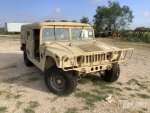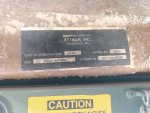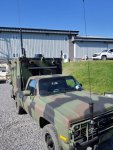If you can mount antennas on the roof, put as large a piece of aluminum under the antennas as possible. The roof location maximizes the performance of antennas. The ground of the antenna needs to be mechanically connected to the aluminum. To increase the metal area, add as much aluminum tape as possible to the interior of the roof area. The aluminum tape needs to be electrically connected to the large metal plate. If you are planning on installing more than one antenna on the roof, try to keep the antennas as far a part as possible, yet keep them at least 1/4 wavelength from the edge of the metal plate. Try not to install them closer than 1/4 wave length of the lowest frequency. Best to use a NMO thick roof mount kit for VHF or UHF antennas. Thickness of the aluminum does not make a difference electrically.
As for the HF antenna, again the higher the better. If you can get the base of the antenna above the roof line, it will work better. Ensure that the metal base mount is electrically and mechanically connected to the metal frame of the vehicle. This can be accomplished with a good quality metal braid.
Try to keep the metal braid as short and as direct as possible to the frame ground. Clean all connections prior to installation.
Antennas that are mounted on the sides, corners, hood, trunk deck and other places not on the roof, will have directional patterns. Roof mounted antennas will offer a more uniform omnidirectional pattern.
Attached are pictures of how I did my M1009 and M1008 HF, VHF and UHF antennas.
I hope this helps.







